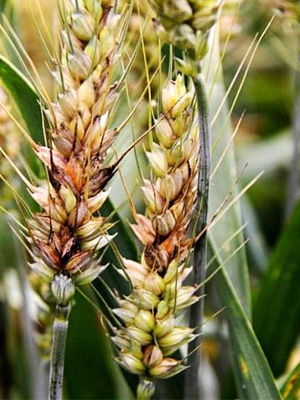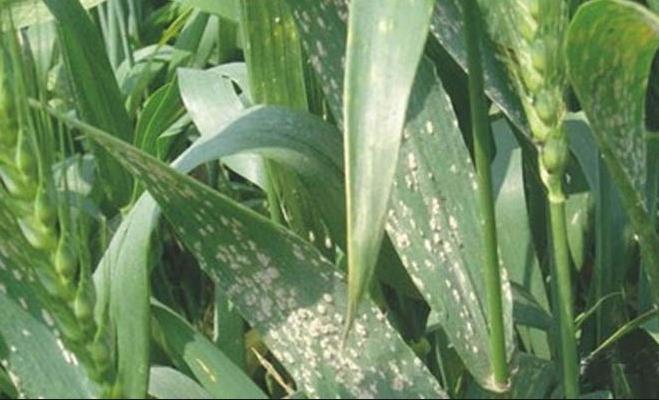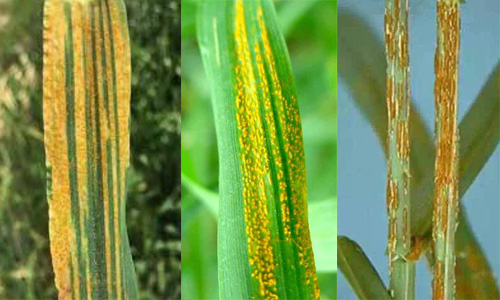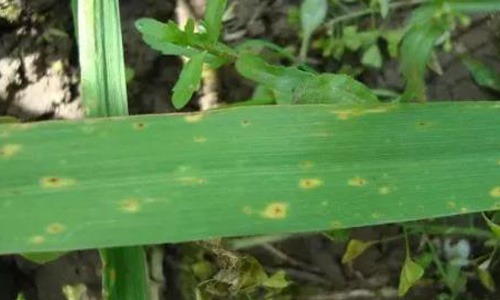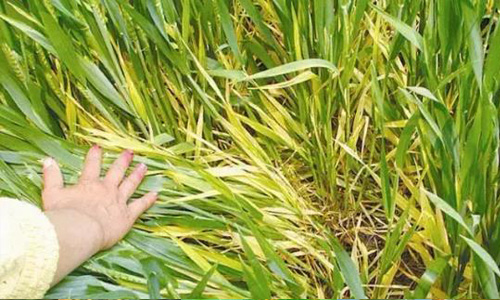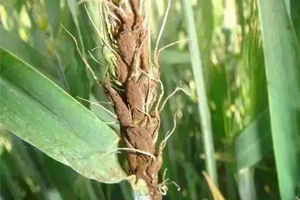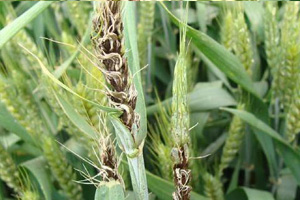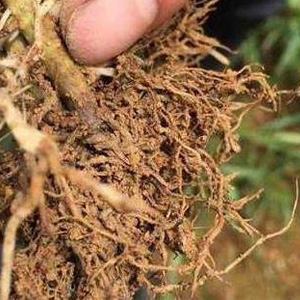1 . Wheat scab
During the flowering and filling period of wheat, when weather is cloudy and rainy , there will be a large number of germs in the air, and diseases will occur.
Wheat can be damaged during the period from seedling to heading, causing seedling rot, stem rot, stalk rot and ear rot, among which the most serious damage is ear rot.
Wheat grains carrying scab germs contain toxins, which can cause poisoning in humans and animals, causing vomiting, abdominal pain, dizziness, etc.
Chemical treatment:
Carbendazim and thiophanate-methyl have good effect on controlling of wheat scab.
2. Wheat powdery mildew
At the beginning, white mold spots appear on the leaves. Then, it gradually expands into a nearly round to oval white mildew spot, and there is a layer of white powder on the surface of the mildew spot. In the later stage, the spots become off-white or light brown, with small black dots on the disease spots.
Suitable fungicide:
Triazole (triazolone, propiconazole, pentazolol, etc.). The effect is good, but it is not stable, and it can be used in the early stage or for prevention.
Azoxystrobin and Pyraclostrobin also have good effect on controlling of powdery mildew.
3. Wheat rust
Wheat rust often occurs on leaves, sheaths, stems and ears. Bright yellow, reddish-brown or brown uredospore piles appear on diseased leaves or stems, then the spore piles turn black. The disease affects the development and filling of wheat, which makes the grains thinner and reduces the yield of wheat.
Suitable fungicide:
You can choose Azoxystrobin,Tebuconazole,Difenoconazole,Epoxiconazole or the complex formula of these active ingredients.
4. Leaf blight of wheat
Leaf blight mainly affects leaves and leaf sheaths. At first, small oval yellowish or light green spots appear on the leaves. Then the plaques become larger rapidly and become irregular yellow-white or yellow-brown large plaques.
Generally, the disease starts from the lower leaves and gradually develops upwards. In severe cases, the leaves of the whole plant turn yellow and die.
Suitable fungicide:
You can choose Hexaconazole,Tebuconazole,Difenoconazole,Thiophanate-methyl or the complex formula of these active ingredients.
5. Wheat smut
At the beginning of the disease, there is a gray film outside the ear, which is full of black powder. After heading, the film broke up and the black powder flew away.
Suitable fungicide:
You can choose Epoxiconazole,Tebuconazole,Difenoconazole,Triadimenol
6. Root rotof flax
The disease has different symptoms in different climates. In arid and semi-arid areas, the disease often causes stem base rot and root rot; in rainy areas, besides the above symptoms, it also causes leaf spot and stem withering.
Prevention:
(1) Select disease-resistant varieties and avoid planting susceptible varieties.
(2) Strengthen cultivation management. The key to controlling root rot at the seedling stage is that the wheat field cannot be cropped continuously, and it can be rotated with crops such as flax, potato, rapeseed and leguminous plants.
(3) Seed soaking in medicament. With tuzet, soak the seeds for 24 to 36 hours, and the control effect is more than 80%.
(4) Spraying control
For the first time, propiconazole or thiram wettable powder was sprayed during the flowering stage of wheat,
For the second time, thiram was sprayed from the wheat grain filling stage to the early stage of milk ripening, with an interval of 15 days. Or triadimefon can also effectively control the disease.
Post time: Aug-15-2023


